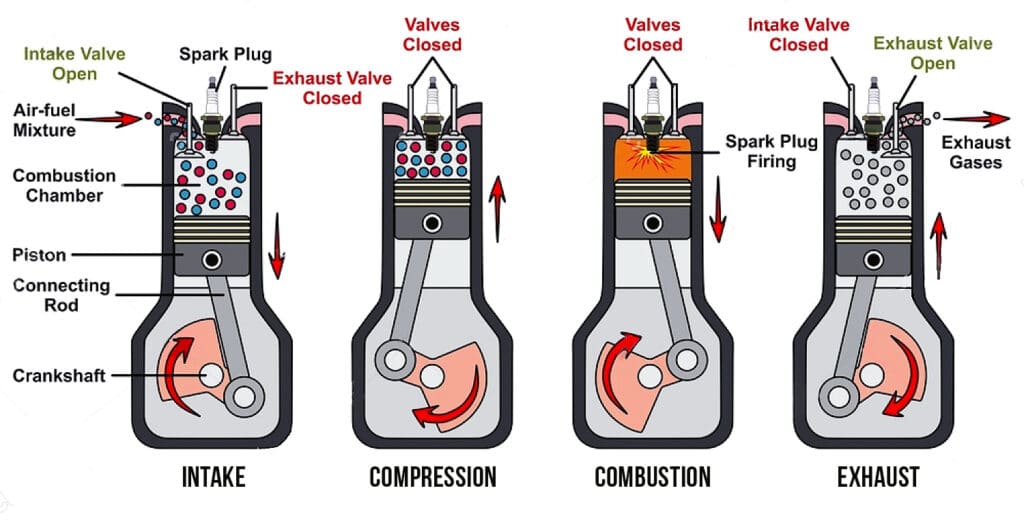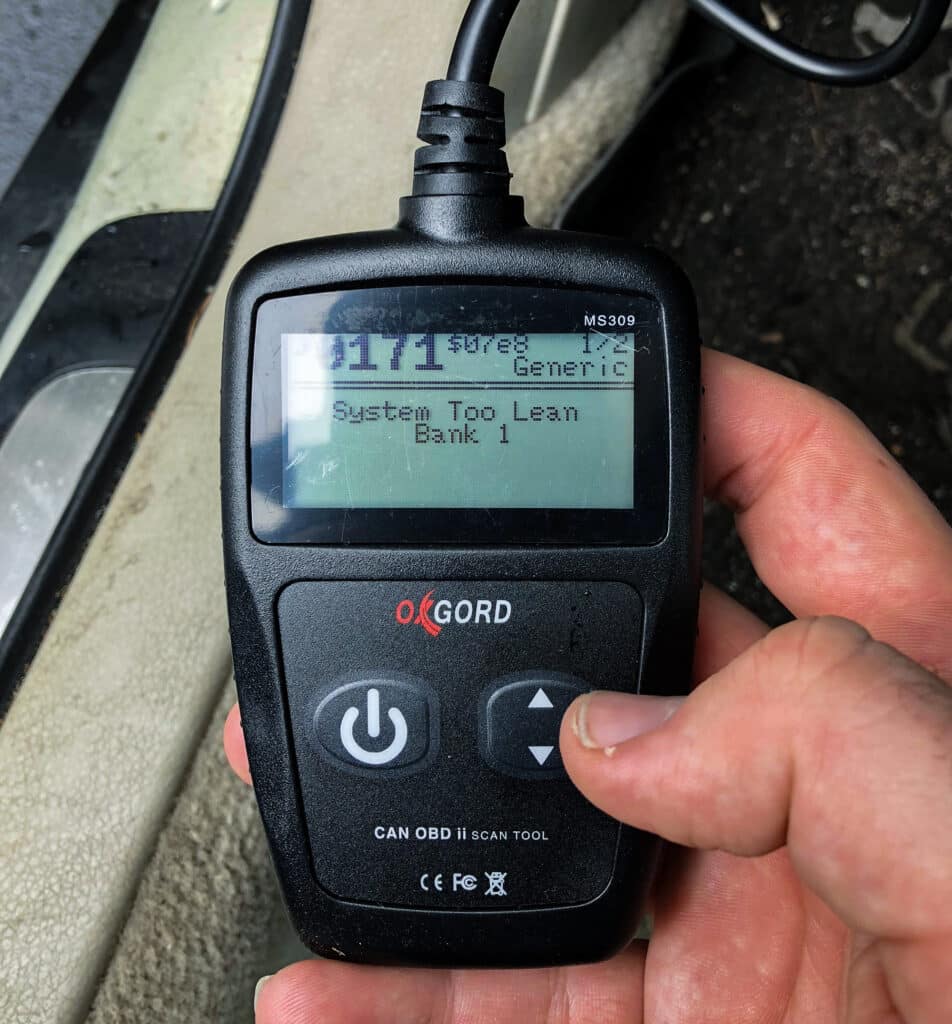One of the most important things when it comes to owning a car is keeping it in top shape. A key element of that is the engine. Well, for those cars who have one, anyway.
Engines need to be maintained to very high standards, because if they aren’t, it can lead to a whole host of problems. One thing that every owner should always make sure of is that the engine is receiving the perfect amount of air and fuel.
This will allow ideal operation and performance. However, what happens if the engine is getting too much fuel, or too much air?
That leads to two different phenomena known as an engine running rich or lean, depending on which one of the two main motivators of internal combustion is lacking.
In this article, we will focus on what running lean actually means, what causes it, how to fix it, and how to prevent it happening in the first place.
What Does It Mean When a Car Is Running Lean?
Running lean vs. running rich is dictated by the engine’s fuel-air mixture. As you know, an engine needs fuel and air to initiate the process of internal combustion.
The term used to describe when an engine receives the perfect amount of fuel and air is called stoichiometry. For gasoline fuel, the stoichiometric air-fuel ratio is about 14.7:1, that is, for every gram of fuel, 14.7 grams of air are required.

When an engine runs lean, it means that the air going into the combustion chamber far exceeds the amount of fuel. This means that combustion is happening with a lot less fuel than is necessary.
On the other hand, an engine running rich is the exact opposite. Running rich means that too much fuel is going inside the cylinders, which can lead to serious engine damage and carbon buildup.
Engine Running Lean Symptoms
Now that you know what it means for an engine to run lean, lets delve into how you can spot the early symptoms of this problem.
One way to spot a lean running engine is a decrease in performance. The combustion that occurs in the cylinders is what brings the pistons back up and allows them to continue spinning. This, of course, requires a certain amount of fuel.

However, if an engine is running lean, the cylinders aren’t getting enough fuel, but mostly air instead. This means that the explosion will be weaker, which makes driving the pistons back up slower, and that’s what hinder your performance.
Check whether your car is having problems when accelerating, or if it’s generally slower and feels like it’s lacking power even when you’re giving it plenty of gas.
Another way to spot this is by seeing if your check engine light is on. Sure, check engine lights can come on for a variety of different things, but it could also mean a lean fuel-air mixture.

The best way to confirm is by using diagnostic tools. Modern cars have any and all varieties of sensors, and diagnostics should tell you if the check engine light does indeed mean something is up with the air-fuel mixture, or if it’s something else entirely.
Don’t go assuming that a check engine light automatically means an air-fuel mixture issue, check with your mechanic or by yourself if you have the hardware.
Due to the fuel-air mixture preventing the right amount of fuel to go in, your car may not start at all. Again, this could mean a lot of different things, but it’s another symptom of a lean fuel-air mixture.
Because the engine is not getting enough fuel to start and spin the crankshaft, your car simply won’t go.
The lack of fuel can also lead to the engine sputtering and making all sorts of sounds while you’re on the move, and even outright stalling while you’re driving.

Again, because of the lack of fuel going into the combustion chamber, it means, in turn, that the engine is not getting enough fuel to simply keep going.
If you notice the idle is rough and the revs are jumping up and down while you’re stationary, that’s another clear sign of a lean running engine.
As well as that, the engine might also take longer to get up to its operation temperature, which is caused by the smaller explosions in the combustion chamber due to the lack of fuel.
Finally, another way to check the fuel-air mixture is to check for symptoms of bad spark plugs. If everything is in perfect order, your spark plugs should have some fuel residue on them, which should tally up depending on how old they are.
If there is none or very little, that’s a definitive indication that your engine is running lean.
A lean fuel-air mixture can be caused by a variety of things, like vacuum leaks in the intake manifold, bad EGR valves and MAP sensors, malfunctioning MAF sensor, clogged injectors, a clogged fuel filter, or a bad oxygen sensor.
What Happens When This Issue Is Ignored?

Even if the car is clearly calling for help, drivers may brush off the symptoms and continue driving with a lean fuel-air mixture. If you don’t correct the issues on time, this leads to some serious implications, all of them very damaging to your engine.
Probably the least harmful thing that can happen to your engine is the build-up of dry spots inside the cylinders. Due to a lack of lubrication inside the cylinders, parts can start to grind on each other and cause damage.
While this won’t lead to complete engine failure, it will cause your engine to run less optimally than usual. Detonation or engine knock is a common problem.
One slightly more concerning problem is the possibility of a soft seizure, which is basically a lack of lubrication. In addition to supporting the combustion process, fuel also lubricates the pistons and other moving parts that are exposed within the cylinders.

When there’s a lack of fuel, there’s also a lack of lubrication, which will cause the pistons to grind against the cylinder walls, consequently damaging them.
Eventually, all that grinding will wear down the pistons, causing your engine to seize up. Also, if there’s even less fuel in the combustion chamber, the pistons will operate at dangerously high temperatures, which could snap the connecting rod or the crankshaft.
If you damage a conrod or a crankshaft, you will need to replace or rebuild your engine, which is expensive and not exactly an enviable situation to be in.

An engine running too rich can also burn a hole in the pistons, which will create another expensive repair bill and a lot of hassle.
To summarize, it’s not a good idea to constantly run your engine lean, as doing that for too long will definitely cause significant damage to it, and the repair bills won’t be cheap.
How to Fix a Lean Running Engine?
The most well-advised first step would be to go to a mechanic and plug in an OBDII diagnostics tool. If you have the necessary hardware at home, go ahead.
If your car throws up a check engine light, the OBDII scanner will tell you what exactly caused it to go on. If it’s something to do with MAF, MAP, or EGR, or anything along those lines, then it’s very likely your engine is running lean.

It’s important to diagnose your car’s engine at first, as a misdiagnosed check engine light under the assumption that your engine is running lean could lead to other issues.
After you’ve ensured that the cause of the problem is the air-fuel mixture, have a look at which one of the components is causing an issue. Your car should tell you exactly which component it is.
If the OBDII scanner points to one of the sensors, inspect them. Have a look under the hood and see if there’s anything wrong with the wiring. Because these are electronic sensors, it could very easily be a faulty wire, whether that means fraying or corrosion.
The best thing to do if the root of the issue turns out to be a sensor is to replace it with a brand new one. Jerry-rigging it with new wires or isolation is possible, but it’s best to just opt for a new part, as DIY work is risky and it could lead to electrical fires if you’re not careful.
Another potential cause that the car might not show in diagnostics is clogged fuel injectors. Even if the above mentioned items show up in the diagnostics, it’s a good idea to check the injectors.
Take them out one by one, and see if any clogging has occurred. In a best case scenario, you’ll have to clean them up, but you also may need to replace them, which can get pretty expensive.
Preventative Maintenance
Now that you know how to fix an engine that’s getting in too much air, you’re likely wondering how a situation like this can be prevented in the future. Good news is, it’s actually relatively straightforward.

Once you sort out your engine’s fuel-air mixture, keep an eye out for any potential returning issues. Check your spark plugs and see if they’re getting good deposits of fuel on them.
Run another OBDII check and make sure that the engine is no longer throwing error codes. While driving, pay attention to operating temperatures and performance.
If the car is performing as it should, and if it’s achieving operational temperatures in good time, then you’re good to go.
But, if you start seeing any of the above symptoms crop up again, make sure to act on time and sort them out, to avoid any additional damage.
Concluding Summary

While it’s not the worst thing that can happen to an engine, running lean can have some pretty serious implications if not kept under control. It can be caused by a variety of different things, and some of them might be a bit more difficult to spot than others.
However, the components that might lead to your engine running lean are fairly straightforward to replace, and it’s not impossible to fix your engine so it gets all the air that it needs so it works in the best possible order.
If you’re careful and keep things under control with your fuel injectors and sensors, you can spot the early warning signs that you’re running lean. This helps you avoid the need for a replacement engine or major repairs that could very expensive, very fast.
How do you monitor your air-fuel mixture? Do you have a system in place? Let us know by leaving a comment below!

